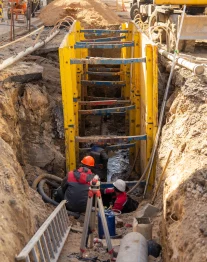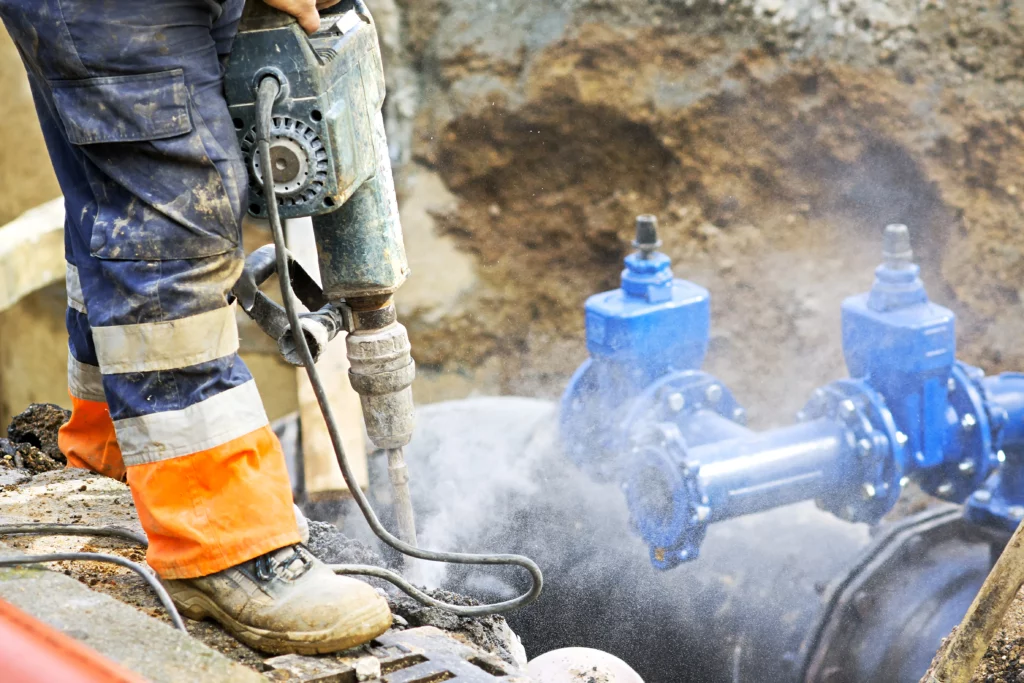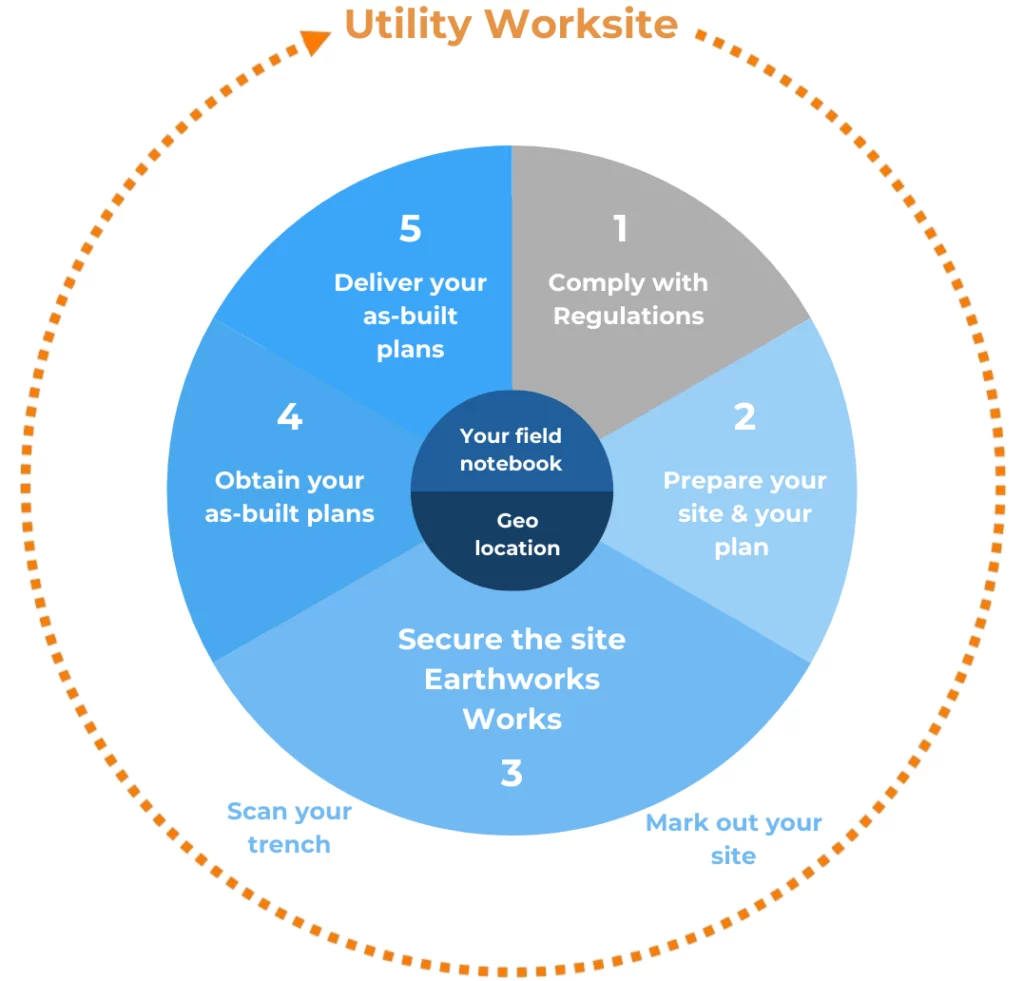Protecting your teams, securing your worksites, marking and staking, meeting deadlines and complying with regulation are at the heart of your challenges.
Good plans are an essential element to preent risks associated with work near underground pipes. They are used to ensure worksite safety and prevent damage to existing infrastructure whenever work is carried out on networks, whether on water pipes, gas pipes, electricity cables or communications cables.
Often works companies appoint a surveyor and a work site manager to carry out the work on the burried networks, starting with marking and staking.
This site team often intervenes in unforeseen and difficult conditions with a sharp team.

Are you an utility operator, a surveyor, a works company or contractor?

Ensure worksite safety to protect the lives of your operators
Work on utilities involves the use of machinery, tools and the movement of large quantities of materials, exposing your site team and other people in the vicinity to a proven risk.
One life is lost every two days and 60,000 accidents occur every year. The issues of worksite safety and risk management are therefore vital.
It is essential that the site manager, the surveyor and the health and safety coordinator have access to the most up-to-date and accurate plans of the underground utilities, so that they can carry out proper marking and staking.
This way, during opening earthworks, your employees will avoid any dangerous unforeseen events. The operations of setting up the site, surveying, earthmoving, measuring and capturing utilities location must be carried out in such a way as to avoid the dangers associated with descending into the trench.
Digital tools must be intuitive and simple for non-technological on-site workforce so as not to disturb their level of concentration and vigilance.
Your site team will use topographic tools with vigilance, considering the hostile conditions of the environment.

Avoiding material damage
Without accurate preparation and marking of the location of underground utilities, the excavation operation can cause damage to the pipes, with an increased risk for gas pipes.
To avoid damage and ensure that the site is safe, it is essential to make the marking and staking in accordance with underground utilities plans. This essential operation must be carried out using the right tools for these critical operations.
This time-consuming and sensitive work must be clearly coordinated between the surveyor and the site manager.
Mandatory maintenance of markings is also necessary, as it requires time and rigor throughout the site phase.
Control your worksite deadlines, cut costs and reduce nuisance
Utilities operators have critical service obligations to users, whether in the supply of water, sewerage, electricity, gas, internet or telephony.
Any planned work near utilities must be carried out without damaging them.
In the event of a service interruption requiring intervention on the pipes, it is essential to have up-to-date maps and to use marking and staking tools to dig the trench in the right place quickly so that service can be restored as quickly as possible.
Efficient network maintenance is a key issue for utilities operators.

Keep your assets up to date, minimise nuisance and prepare for the future
Public-sector contractors, particularly local authorities and conurbations, need to know the precise position of the utilities that form part of their assets.
This enables them to study and simulate redevelopment projects without any surprises.
Precise knowledge of the location of underground utilities enables reliable decisions to be taken on new urban development projects.
Comply with regulations and standards
The operator must provide a topographical reference system for the location of underground utilities, which must be updated accurately after the work has been carried out.
The tools must enable the workforce appointed to the site to use the plans and ensure that they are kept up to date and that the marking and staking on the work are effective, as well as guaranteeing that the site is safe.
In order to comply with these standards at the lowest possible cost, exchanges and coordination must be made fluid, while making plans easier to manipulate at any time.
These rules have been drawn up to ensure that worksites are safe for subsequent works.

